Aloe Vera Propagation: How to Plant Without Roots
Do you have an aloe vera plant and want to grow more? Well, you’re in luck! Aloe vera is a special plant with amazing medicinal properties and it’s used in all sorts of things like medicine and beauty products. If you’re wondering how to plant aloe vera without roots, don’t worry! We’ve got you covered. In this blog post, we’ll explore different ways to propagate aloe vera without roots. So get ready to discover the secrets of growing aloe vera without roots!
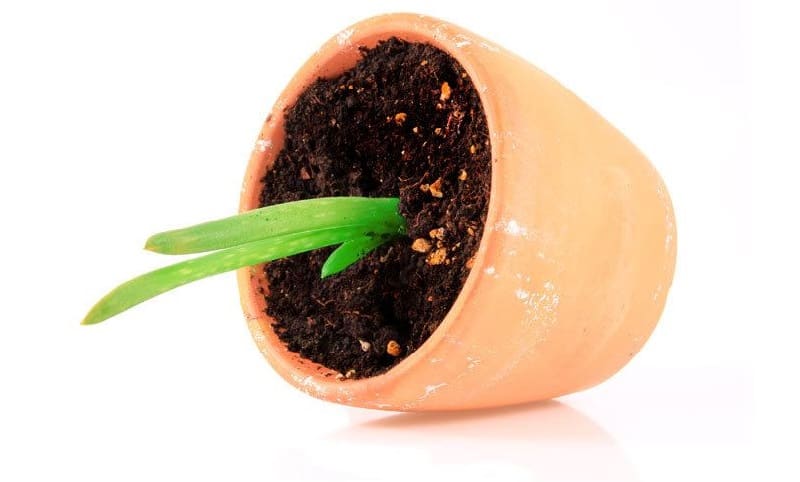
Contents
Can Aloe Vera Grow Without Roots?
Yes, aloe vera can actually grow without roots! It might seem surprising, but this unique plant has the amazing ability to thrive even without the traditional root system. How does it do that, you may wonder? Well, aloe vera is equipped with some special tricks up its sleeve.
One way aloe vera can grow without roots is through a process called propagation. This involves taking cuttings or offshoots from a mature aloe plant and starting new plants from them. These cuttings or offshoots already have a small portion of root material, which allows them to establish themselves and grow independently.
Now that we’ve demystified this intriguing question, it’s time to delve into the fascinating methods and techniques for propagating and planting aloe vera without roots.
Preparing the Soil
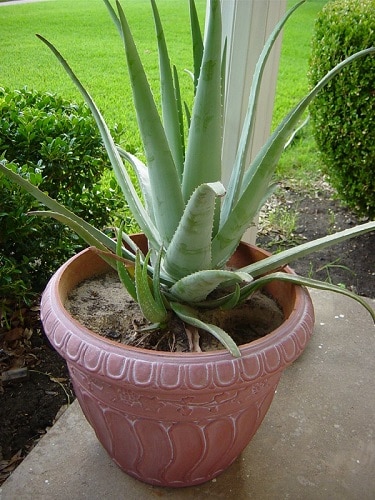
Before you start growing new aloe vera plants, it’s important to create the perfect soil mix. Aloes are picky about their soil, and if you use the wrong kind, your cuttings or leaf cuttings won’t survive. We definitely want to avoid that! So here are some awesome soil mixtures that work great for aloes:
- 3 parts cactus soil, 1 part perlite, and 1 part lava granulate
- 2.5 parts succulent soil, 1 part lava granulate, and 1 part vermiculite
- 2.5 parts potting soil, 1 part lava granulate, 1 part pumice gravel, and half part quartz sand
These mixtures provide the perfect conditions for young aloe plants to thrive. They give the roots the support they need and offer a healthy dose of nutrients and fresh air while preventing waterlogging. Now, let’s make sure the soil is just right – give it a gentle squeeze. If it holds its shape without collapsing, you’re good to go. Finally, check the pH value of the soil. It should be between 6.0 and 8.0. If it’s too low, add some garden lime to bring it up.
Method 1: Propagating Rootless Aloe Vera from Cuttings
If you want to grow new aloe vera plants from cuttings, we’ve got you covered! This method is great for rejuvenating older plants. However, it’s important to note that it can be a bit tricky and doesn’t always work perfectly. Sometimes the leaves end up rotting in the soil because they have too much moisture. But don’t worry, with the right approach, it can still be successful. Here’s what you’ll need:
- Pruning shears, large scissors, or a sharp knife
- Pot with a drain hole at the bottom
- Drainage material like pottery shards or gravel
- One of the soil mixtures mentioned earlier
- Root hormone (or alternatives like cinnamon, willow water, or honey)
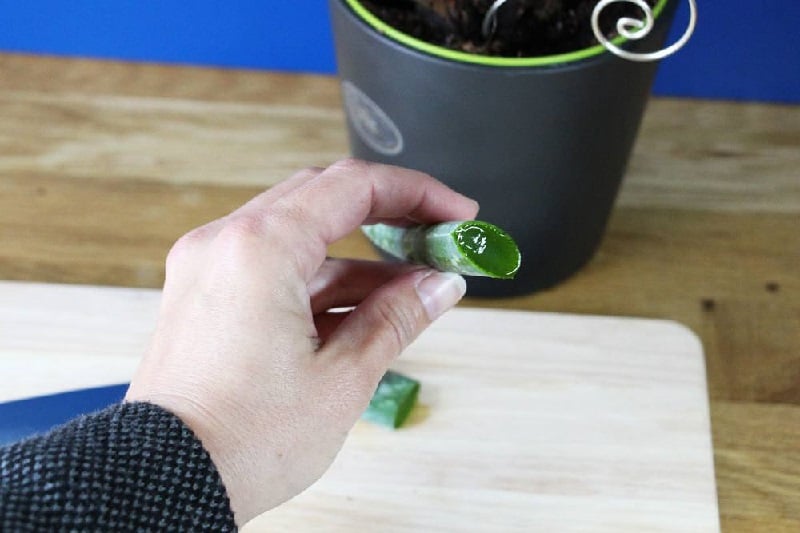
Let’s get started with the step-by-step instructions:
1. Cut and Dry the Leaves
Start by cutting a leaf from the mature aloe plant. Make sure it’s at least 3 inches long. You can cut multiple leaves if the plant is large, but don’t go overboard. Clean your shears, scissors, or knife to avoid infecting the plant.
After cutting the leaves, let them dry in a warm and dry place for about two weeks. This allows the leaves to air dry and form a protective white film, preventing mold. Once you see this film, you’re ready to propagate.
2. Prep the Pot and Soil
Place a thin layer of drainage material at the bottom of the pot to ensure proper water flow. Then fill the pot with the appropriate soil mixture, leaving about three centimeters of space below the rim to prevent spillage.
3. Plant the Cuttings
Take a leaf and dip it in a glass of root hormone (or alternative options). This step encourages the development of roots, although it might be a slow process. Be careful not to make the leaf too wet before planting it.
Insert the cuttings lengthwise into the soil, covering them with a thin layer of substrate. Leave a small part of the leaf exposed above the soil surface to allow light to reach it. Finally, place the pot in a sunny and warm spot, and water the soil gently. Remember to wait until the soil is completely dry before watering again.
4. Care for the Cuttings
You’ll know if the cuttings are taking root when they dry out a bit or shrink slightly. With time and proper care, new plants will start growing from the leaves. However, if the cuttings become soft and mushy, they are rotting and won’t produce new plants.
So there you have it! Follow these steps, and you’ll be on your way to successfully growing aloe vera from cuttings.
Method 2: Growing Aloe Vera Pups Without Roots
If you want to propagate aloe vera using offshoots, we’ve got an excellent method just for you! Offshoots, also known as pups, are like the baby versions of the plant. They grow right beside the mother plant in the same pot, but here’s the catch – some offshoots can actually be propagated without roots!
These tiny versions of the aloe plant may not have developed roots yet, but don’t worry, we’ll show you how to handle them with care. They may be smaller and lighter compared to the mother plant, but they hold great potential. The best part? Propagating from offshoots increases your chances of success. In order to help them grow, all you need to do is carefully repot them. Here’s what you’ll need for this exciting journey:
- A sharp knife
- Pot with a drain hole at the bottom
- Drainage material like pottery shards or gravel
- One of the soil mixtures mentioned earlier
- Root hormone (or alternatives like cinnamon, willow water, or honey)
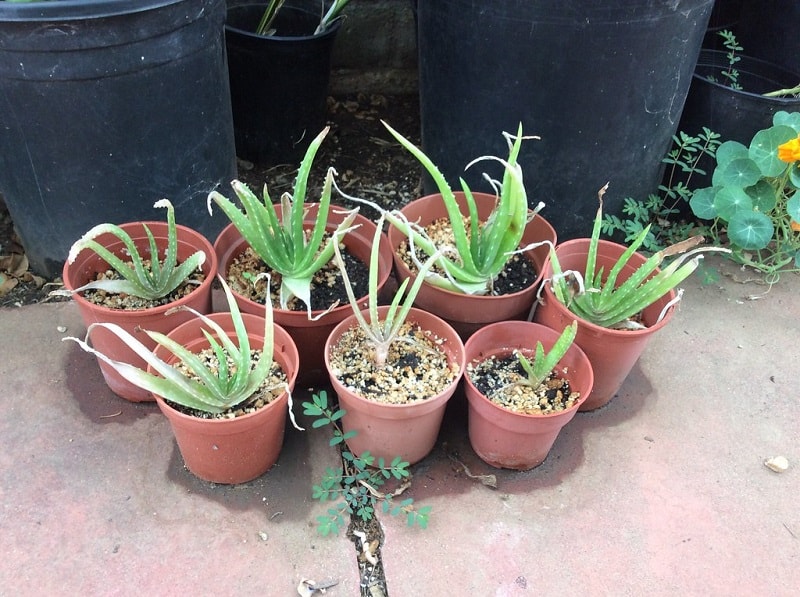
Now let’s walk through the steps:
1. Find and Separate the Offshoot
To separate the rootless offshoots, it’s essential to disinfect the knife first to prevent any infections. Gently remove the aloe vera plant and soil from the pot, and carefully locate the offshoots. These small pups are connected to the mother plant but may not yet have developed their own roots. However, you should be able to identify them easily once they are gently freed from the soil.
You can gently separate the offshoots from the mother plant using your fingers. If they don’t come off easily, use the knife. Once separated, let the offshoots and cuttings dry for a few days, allowing the cut surfaces to heal. During this time, you can repot the mother plant.
2. Plant the Offshoots
Prepare the soil mixture as mentioned earlier for the cuttings. Then, carefully dip the exposed end of the rootless aloe offshoots in the root hormone or one of the alternative options. This helps to stimulate root growth. Once you have applied the rooting hormone, you can gently place the offshoots in the pots that you have prepared for propagation.
If the original pot is large enough, you can plant the offshoot directly into it after separating it. Simply dig a small hole in the soil and place the offshoot next to the mother plant. They can no longer grow together after separation, so this is a convenient option.
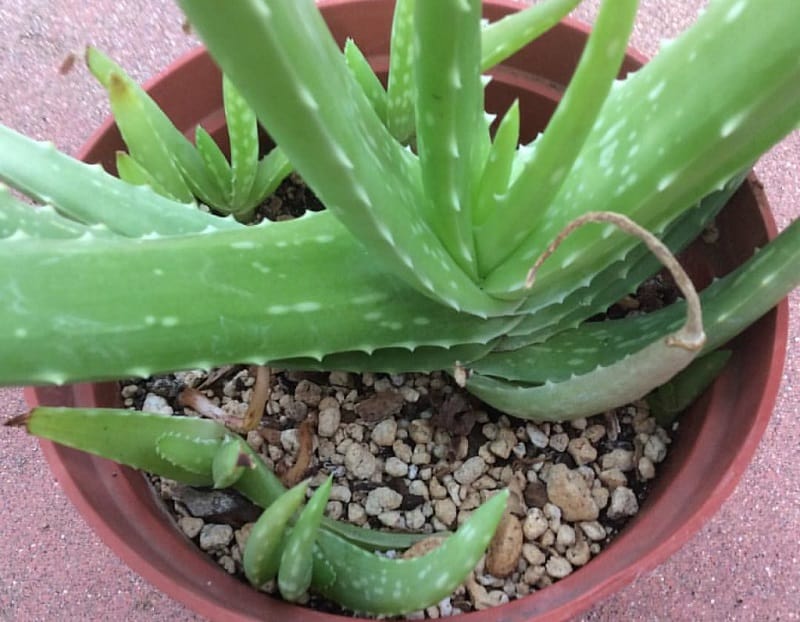
3. Care for the Offshoots
Gently moisten the soil and place the pots in a warm and sunny spot. Avoid watering them again for at least a week.
Follow these steps, and you’ll be on your way to successfully propagating aloe vera from rootless offshoots. Enjoy watching your new plants grow!
